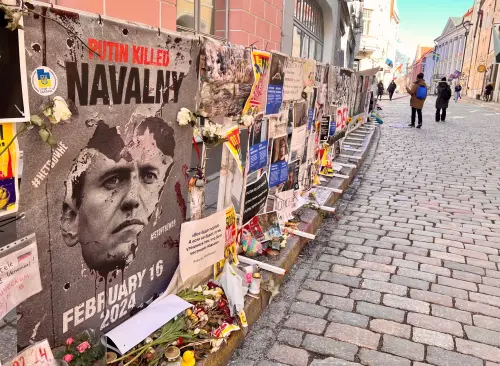Following a meeting with U.S. officials in Jeddah on March 11, the Ukrainian government’s support for a 30-day ceasefire helped to flip the script with the Trump administration after the disastrous Oval Office meeting between President Donald Trump and President Volodymyr Zelenskyy. However, this respite is likely to be temporary. Ukraine and its allies inside the administration and in Europe need a plan for the next phase of negotiations. This next phase should focus on establishing Ukrainian sovereignty and independence as the primary and shared objective in any settlement and locking in the minimal levels of U.S. support needed for Ukraine to continue the war as long as negotiations continue.
The state of play
From Trump’s perspective, prior to the Jeddah meeting, the Russians were engaged in peace talks while the Ukrainians were insisting on U.S. security guarantees as a precondition and complaining that the Russians would never abide by a ceasefire. Trump blamed Ukraine and began to impose costs, including suspending bilateral intelligence cooperation and freezing arms shipments.
Ukraine’s decision to support the 30-day ceasefire delivered a simple and clear message: Ukraine wants the war to end immediately without preconditions, while Russia is imposing demands that would be tantamount to Ukraine’s surrender. It worked. The United States turned intelligence cooperation back on, resumed the flow of arms, and praised the Ukrainians.
Subsequently, U.S. officials had a series of engagements with the Russians, including a call between Trump and Vladimir Putin. U.S. officials said that both sides agreed to a ceasefire on attacks on energy and infrastructure and that they would work toward a ceasefire in the Black Sea.
After this call, the Russians released a readout that detailed their demands. To agree to a ceasefire, Russia said it needed “to stop the forced mobilisation in Ukraine and rearming the Armed Forces of Ukraine” and “a complete cessation of providing Kiev with foreign military aid and intelligence.”
This readout confirmed that Russia’s aims remain maximalist. Moscow seeks a neutered Ukraine with severe limits on its sovereign right to defend itself and to deter a future attack. Meanwhile, attacks on energy infrastructure continued.
So, where does that leave us?
Objectively, the primary diplomatic problem the United States needs to solve remains how to persuade Putin to accept something he currently opposes, namely, a free and sovereign Ukraine.
In practice, it is unclear whether Trump recognizes that. While he recently acknowledged that the Russians are “dragging their feet,” Trump could respond by heaping pressure on Moscow. Alternatively, he could blame Ukraine for being unwilling to accommodate some of Putin’s demands, seeing it as an impediment to the broader U.S.-Russia partnership he says he is committed to pursuing.
Focus on sovereignty
This begs the question: what should Ukraine, its European allies, and those in the Trump administration that support it, do now and in the coming months?
Ukraine’s immediate objectives should be to ensure that Trump believes Kyiv is a constructive partner in peace and continues to facilitate its military efforts as long as the war continues. More broadly, it should try to reenlist the United States as an ally in the negotiating process with a shared end state and strategy for getting there.
The first step is to maintain support for a 30-day ceasefire and to consider expanding it to a permanent, unconditional end to the war. Under this offer, violence would end, but all the major issues would remain unresolved. Russia could rearm, but so could Ukraine.
Zelenskyy was originally reluctant to offer an unconditional ceasefire. He insisted that Ukrainians needed to know that the war would not start again in a few months or a year. He believed that a ceasefire was a key bargaining chip to leverage with allies—one that should be used to extract the security guarantees needed for a just and lasting peace.
The harsh reality, though, is that a just and lasting peace is no longer on offer. There is no prospect of the Trump administration agreeing to a U.S. security guarantee, either directly or by providing a credible backstop for European troops. European nations are committed to Ukraine—they are not going to lose interest if the war ends because they clearly understand that the Russian threat will persist and securing Ukraine’s future is a vital European interest.
This ceasefire messaging will help with the Trump administration, but it may not be enough. Ukraine also needs a backup plan, first to be relayed privately to U.S. officials as to what compromises it could live with in a negotiation.
This backup plan needs to be organized around the idea of Ukrainian sovereignty and self-reliance. This is the only concept that Trump administration officials have endorsed as a U.S. objective in negotiations. For example, even Vice President JD Vance, who seems to be Ukraine’s harshest critic in the Trump administration, told The Wall Street Journal in February, “There are any number of formulations, of configurations (of a peace deal), but we do care about Ukraine having sovereign independence.”
This could be used to justify Ukraine’s right to rearm and to build a force that is capable of defending itself and deterring a future attack, through indigenous military industrial capacity as well as external assistance for offensive and defensive capabilities—the so-called Israel model. Ukraine can argue that there should be no limits on its rearmament unless Russia agrees to verifiable and reciprocal restrictions on its own side—something Moscow will never do.
Sovereignty will also be a factor in any compromise on territory. It is highly likely that Russia will continue to occupy roughly 18% of Ukraine. That will be a difficult pill for Ukrainians to swallow, but they will likely accept a peace deal on those terms as long as it does not involve legal or political recognition, meaning that they can continue to seek the return of the territory by non-military means. Ukraine must also remain in control of its own political system, foreign policy, and free and fair elections without any imposed constraints from Moscow.
The wild card: the U.S. unilaterally stops supporting Ukraine
A negotiating position organized around Ukraine’s sovereignty is the stance most likely to secure the Trump administration’s support, but Putin may still stick to his maximalist demands and refuse to agree to a settlement acceptable to Kyiv. The wild card, and what Putin may be counting on, is that Trump will end all military cooperation with Ukraine, partly to be done with the war and partly to normalize relations with Russia. Ukraine and its allies in the Trump administration and in Europe also need a plan to avert this outcome.
They should start by making the argument that the only plausible theory of persuading Putin to stop the war on terms acceptable to Ukraine involves convincing him that Ukraine can and will continue to fight if he sticks to his maximalist demands. If the war goes on, he will not make any major gains, and he will continue to pay a massive price—1,500 casualties a day, over 700,000 to date over the course of the war. This may be unsustainable without a general mobilization, which he does not want to do. Recently, Putin conscripted 160,000 people, the largest conscription since the beginning of the war and a sign of his manpower shortages. No other form of leverage—including sanctions—comes close to this.
If the United States ends its support for Ukraine, Putin will have no reason to end the war, but Ukraine is unlikely to collapse. Ukraine is not as reliant on the United States as it was in the first three years of the war. It has cranked up its own defense industrial base, producing drones and other weapons. European nations are doing more to support Ukraine’s security—for example, the Czech Republic has played a leading role in providing 155 mm munitions to Ukraine.
Although Ukraine will continue to fight, it will face critical shortages. Its casualty rate will rise, and Russia’s will likely fall. Russia may make more territorial gains. If Russia somehow succeeds in subjugating Ukraine, the Trump administration will own Ukraine’s defeat, and Putin will be tempted to stoke other crises in Europe to drive a wedge between the United States and its European allies.
In short, the Trump administration should have selfish reasons not to pull the plug. But Trump will not want to commit to supporting Ukraine indefinitely. To square this circle, Ukraine and its allies should broker a compromise with Trump whereby the United States provides the things that cannot be provided by others, as long as Russia is the primary obstacle to peace. This includes intelligence cooperation, GMLRS rockets, and air defenses, especially interceptors. Europe could offer to pay the United States for the weapons and equipment, either out of its own funds or by tapping Russia’s sovereign assets.
If Europe offers this compromise and the United States accepts it, Trump can say that he has reduced U.S. support for Ukraine and is laying the foundation for a successful negotiation to end the war.
-
Acknowledgements and disclosures
The author would like to thank Alejandra Rocha for her research assistance on this piece.
The Brookings Institution is committed to quality, independence, and impact.
We are supported by a diverse array of funders. In line with our values and policies, each Brookings publication represents the sole views of its author(s).





Commentary
Building on Jeddah: What Ukraine needs to do now
Ukraine must ensure that Trump believes Kyiv is a constructive partner in peace.
April 4, 2025